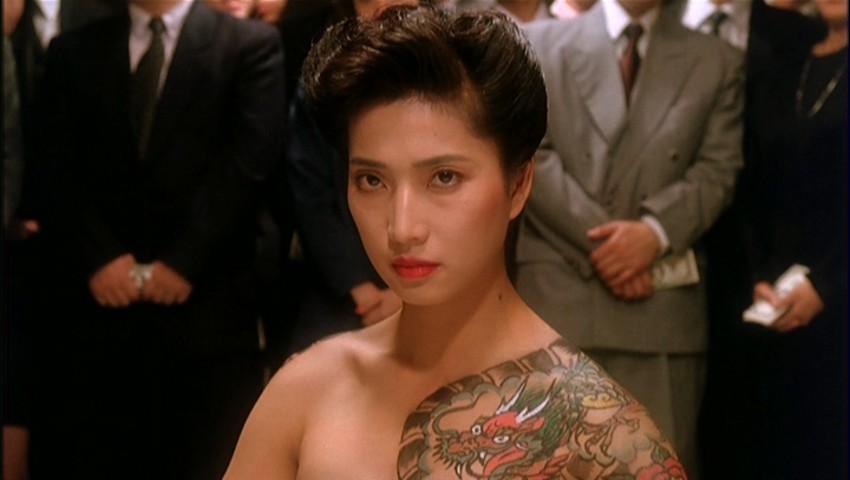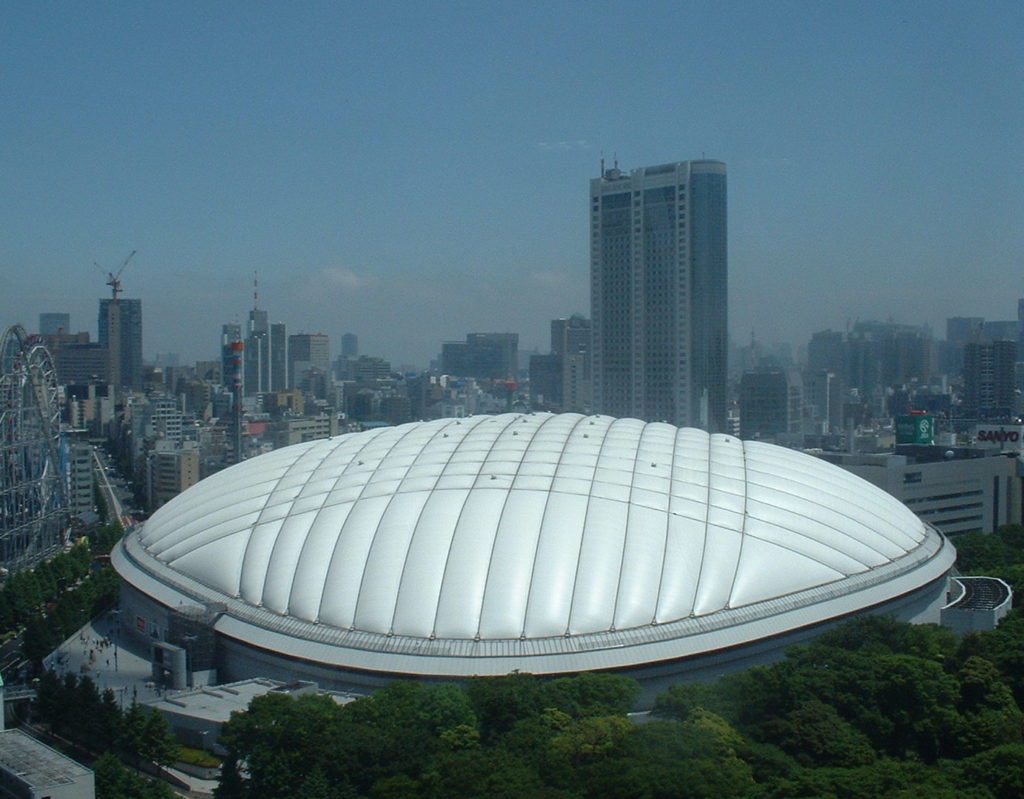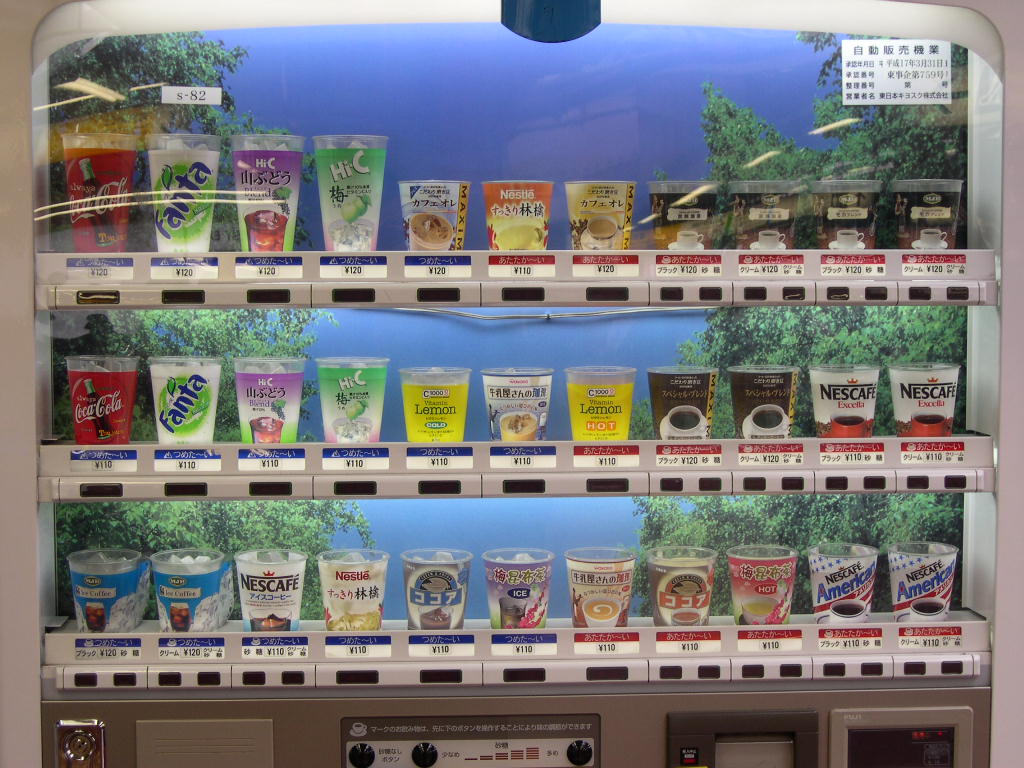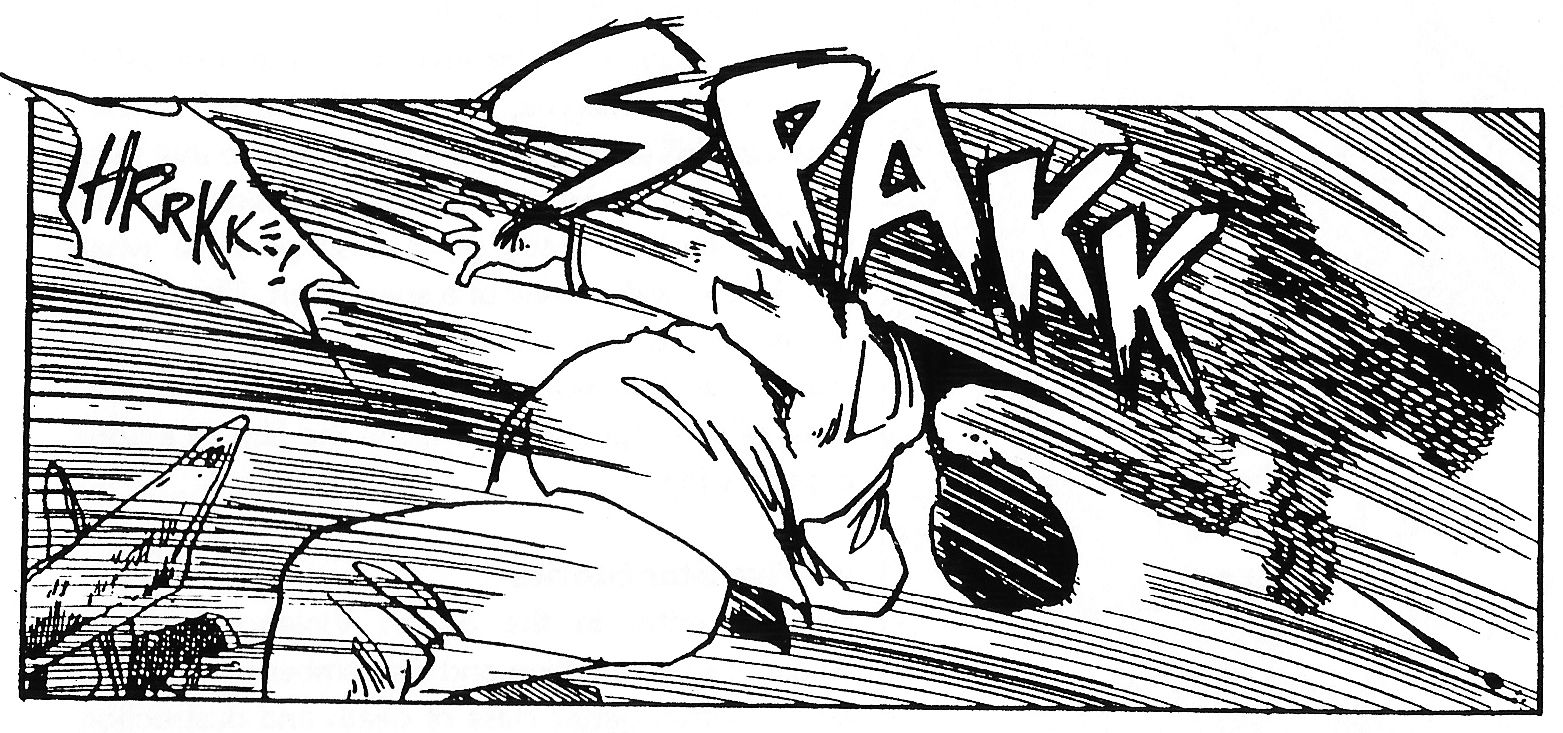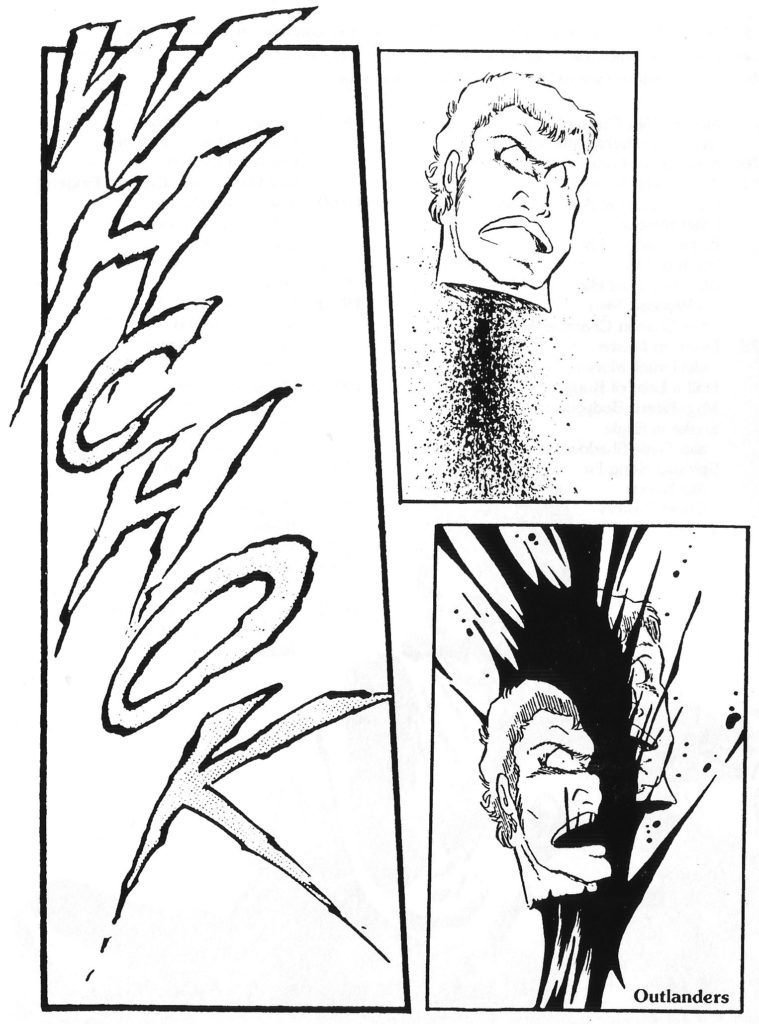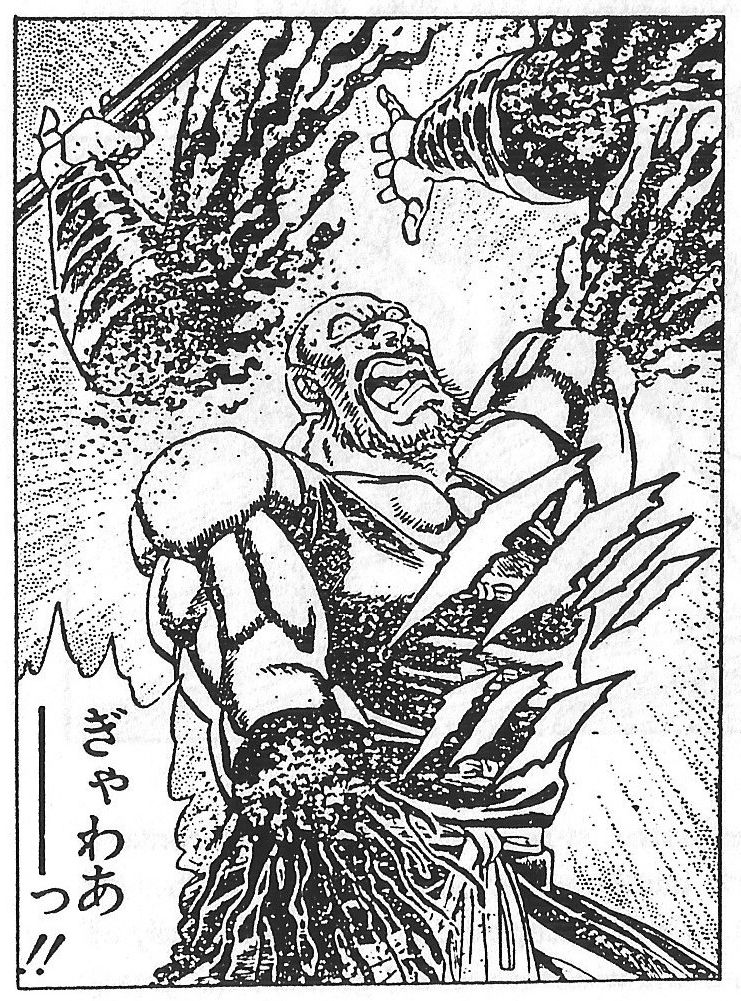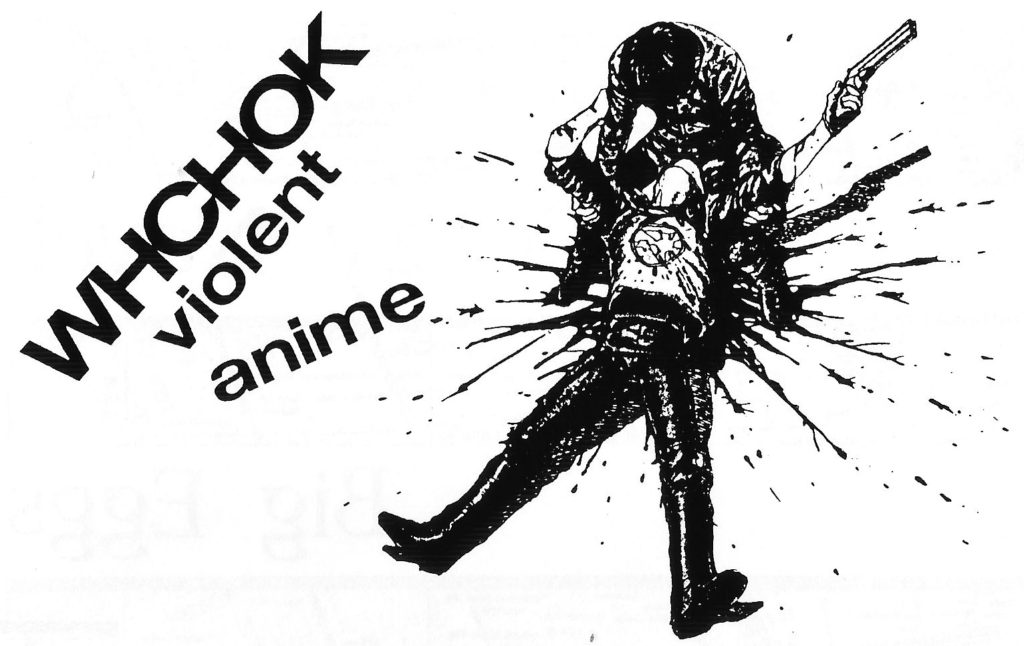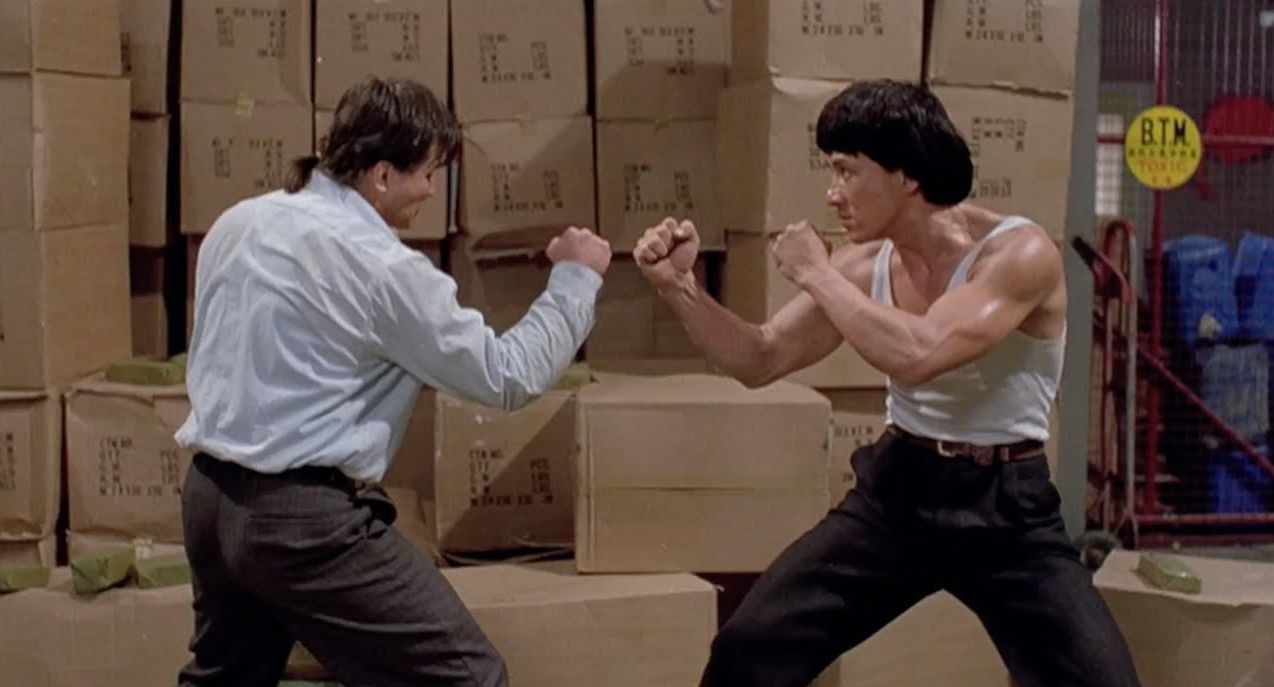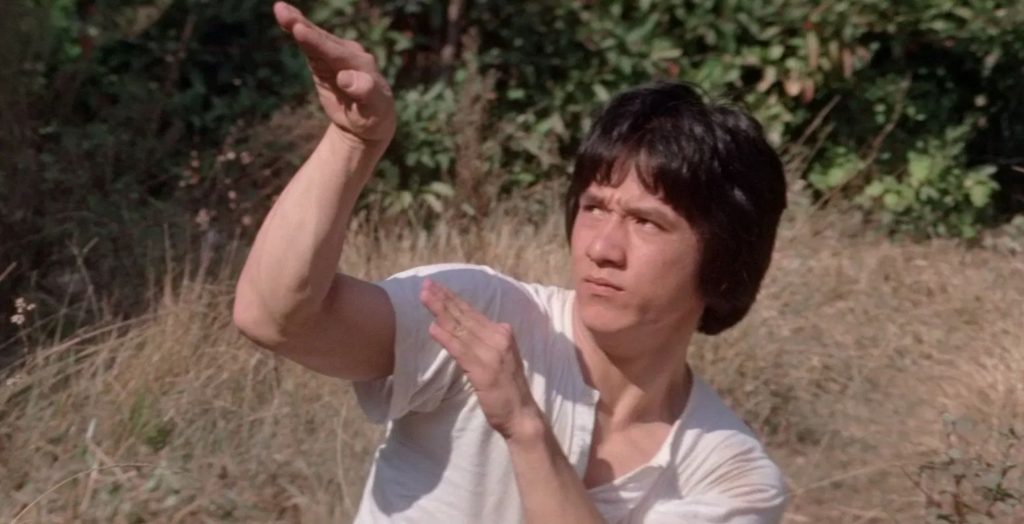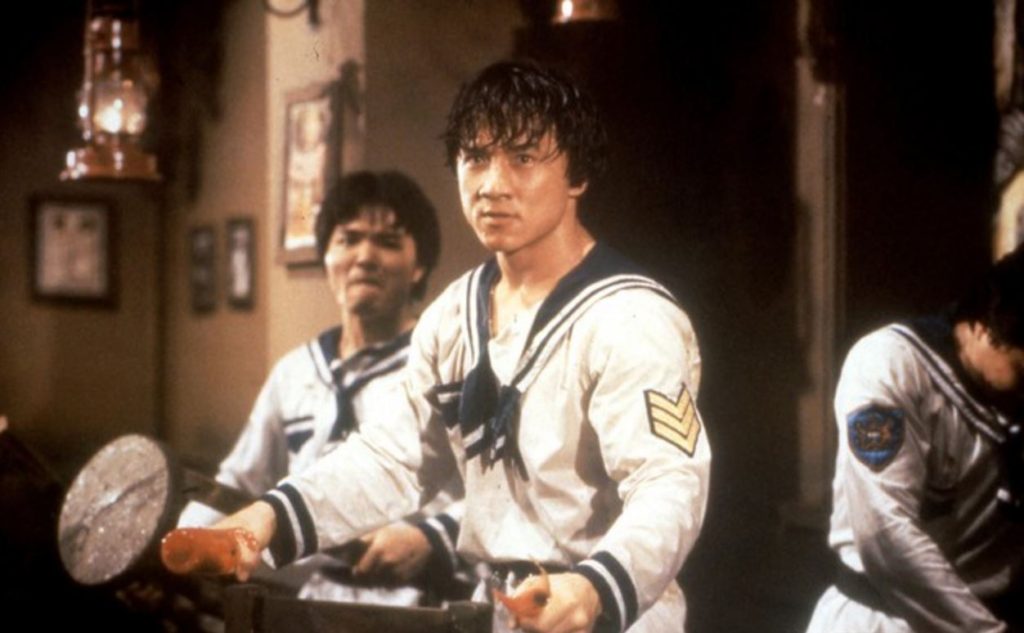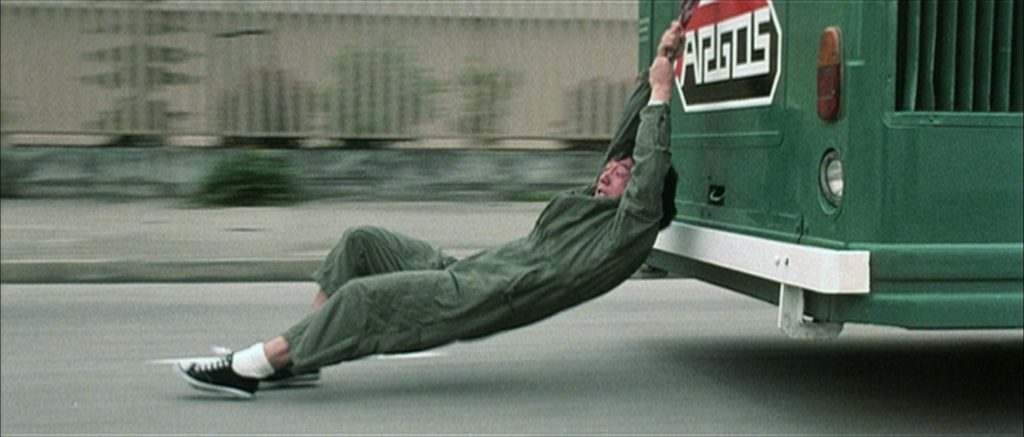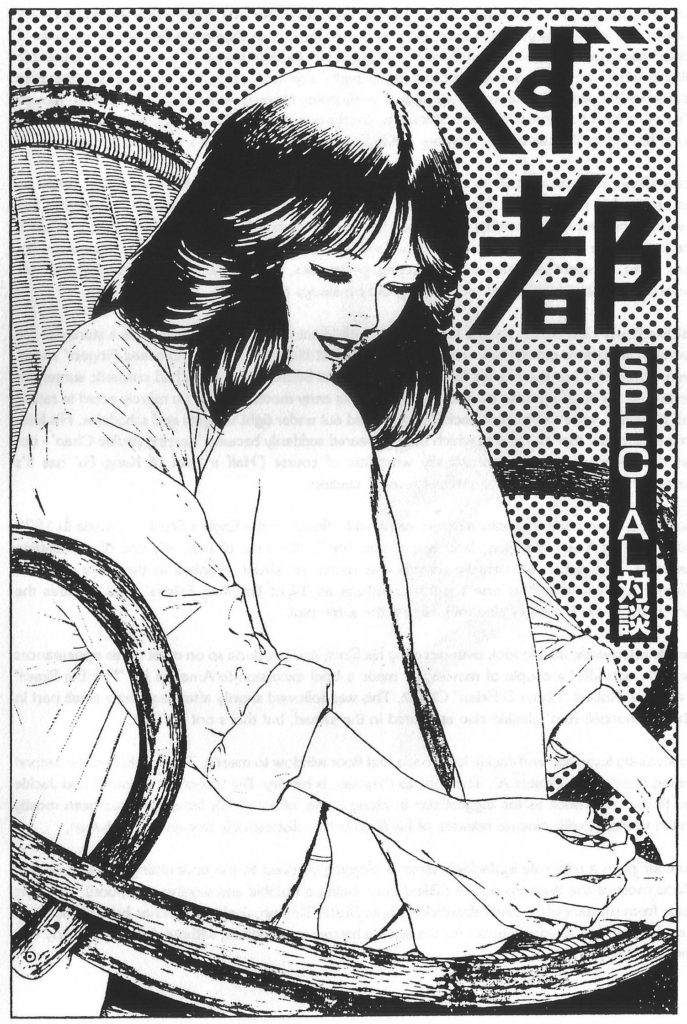Firim Britz
Live-action
A Better Tomorrow 1 & 2 (John Woo) + 3 (Tsui Hark) – From the director of ‘The Killer’, the first two could be considered as a single entity although they’re sharply different in style. The first concerns a gangster trying to keep his ‘career’ secret from his policeman brother and gain revenge for some treachery, helped by hitman Chow Yun Fat (HK’s answer to Rutger Hauer). It’s mostly solid, if slightly earnest, drama, that swings wildly from splatter to soap opera. Tt was enormously successful in Hong Kong, so naturally led to a sequel. Problem: Chow Yun Fat was blown away at the end. Solution: he had a twin brother in New York, who’s dragged in when a friend, trying to go straight, is framed for a murder. Cue a ‘Taxi Driver’ impression, a perfect mix of melodrama and tension and an awesome final 15 minutes, with more corpses than Highgate Cemetery, to which no description can do justice. This is Hong Kong cinema at it’s very best – go down your local Chinese video library now and beg them to give you a copy. Tsui Hark’s entry is a prequel to the first two parts, set in the last days of Vietnam; much of the film gives the impression of being shot in slow-motion, it’s stately and graceful, with the obligatory mega-kill finale. The three movies virtually define the ‘heroic bloodshed’ genre and should ideally be viewed in one session, as otherwise it’s easy to lose track of who’s taking revenge for who, on who! 7, 10 & 8/10 respectively.
Bloody Ghost (Yuen Cheung Yan) – At least, that’s supposedly the title – it was totally illegible on the video. No matter, this is high fun on a low budget, cramming in more plot elements than you can mention: bar hostesses who can do a mean Bruce Lee impression thanks to a pregnant & irate ghost they nicked from a gang leader who’s sent out a hitman to get it back. Oh, and dumb policemen in red underwear. This may not be as spectacular as some entries in the genre, it’s is just as enjoyable. 8/10.
Final Run (Philip Ko) – Burdened by too many characters who all seem to be related to each other, ‘Final Run’ suffers from a rare affliction in Hong Kong movies: an over complex plot. It, like so many others, has evil drug barons; that’s about all I really understood, thanks to perhaps the moat incomprehensible set of subtitles ever inflicted on the English language. You’re grateful when characters die, as it’s one less person to worry about – fortunately, the attrition rate is pretty high. Reasonable mayhem at the end, with Yukari Oshima doing her best. 4/10.
God of Gamblers (Wong Ching) – Chow Yun Fat is one of the few Hong Kong actors capable of gripping you without having to fly through a plate glass window to do it. Here (deep breath!), he plays the ultimate gambler (capable of throwing five dice and getting a total of four pips) who suffers amnesia after a blow to the head and falls into the hands of some low-lifes (with hearts of gold) who realise his potential but not the fact that the entire underworld is looking for him. Phew! It’s more unusual than your average revenge movie, yet also has enough action to keep things going. Chow Yun Fat is superb (as ever), both as the God and as the child he becomes following the accident, complete with a chocolate craving. Baccarat has never been more exciting. 9/10.
I Love Maria (Chung Chi Man) – Another Tsui Hark “production”, so it’s anyone’s guess who really directed it. Obviously heavily influenced by ‘Robocop’, it has the Hero gang using an ED-209 creature to try and take over the city, only to find their way blocked by the Maria of the title (definite shades of ‘Metropolis’) who was re-programmed by accident to the side of good. From here, things just get faster and faster. And faster. People, robots and cameras fly through the air with the greatest of ease, taking your breath with them, right until the climax in what looks like a power station. Wow. 8/10.
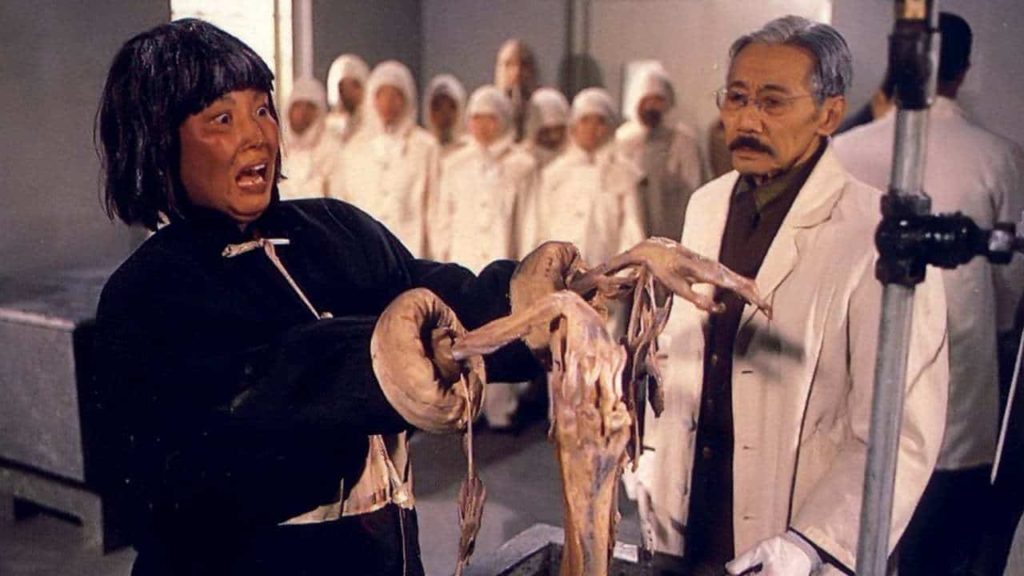
Men Behind the Sun (T.F.Mous) – In the last days of WW II, the Japanese developed bacteriological weapons: 731 Battalion, in occupied Manchuria, was a top-secret establishment for testing these on the local population. ‘Men Behind the Sun’ describes the activities that went on, in graphic detail, yet manages to avoid the pitfalls of other pseudo-historical docudramas. It devotes time to building the characters: although the sympathy is clearly with the victims, the Japanese are not sneering caricatures but real people who believed they were doing the best for the Empire. This makes it even more harrowing as they lose all human emotions towards their test subjects, or ‘marutas’ as they call them (in an effort to dehumanize them, just as the Americans called the Vietmanese ‘gooks’). Even though half an hour elapses before the first atrocity, this is no sanitised TVM, it’s a slow descent into hell. Great detail is paid to historical accuracy – we get victims’ names and ages, dates and places which contrasts markedly with the fast & loose approach of more exploitative films. There’s no morally sound, happy ending, either – this could well be the ‘Henry’ of war movies. It’s not a film to enjoy, or even to like (and so can’t be ‘marked out of 10’) but it’s undoubtedly one to be respected.
Magic Cop (Tung Wai) – When cops try to arrest a suspected drug trafficker, she ends up getting run over. However, the autopsy show she died a week previously. Fortunately, they can call on the services of Lam Ching Yin (from ‘Mr.Vampire’ – the one with the odd haircut), a combined cop/exorcist. His new partners are sceptical, until they see him in action, then they’re behind him 100%. Hiding, mostly, while he takes on Michiko Nishiwaki (rapidly rivalling Cynthia Khan as a favourite) who’s resurrecting the dead as her minions. I’ve seen ‘Zu’. I’ve seen ‘A Chinese Ghost Story’. I thought I’d seen everything. I hadn’t – my jaw spent most of this movie in my lap. A wonderful combination of cop thriller, black comedy and occult movie. 9/10.
Magnificent Warriors (David Chung) – The problem with watching films after coming back from the pub is that specific thoughts are lost, in favour of an alcohol-induced ambience. Preceded, oddly, by a trailer for itself, this one came across as being almost non-stop action, set in China between the wars, with Michelle Khan as an Indiana Jones figure, right down to the whip. The plot was something about the Japanese who were occupying China at the time. I remember enjoying it a lot but would have to watch it again to be sure of precisely why. This must be the cinematic equivalent of pop music; great fun while it lasts and evaporating as soon as it’s finished. I make no claims for it’s entertainment value if sober! 7/10.
Ninja Vampire Busters (Norman Law & Stanley Siu) – What looks like a typically exploitative Colourbox title turns out to be almost accurate, though ‘Kung Fu Demon Busters’ might be a better description. Or indeed, ‘Rabid Daddies’, as a 500-year old demon escapes from an urn to possess the head of one of Hong Kong’s more powerful families. Throw in elements of ‘The Exorcist’ (the ghost moves across to the young daughter), ‘The Thing’ (no-one’s sure who’s possessed), ‘Hellbound’ (monster runs amok in hospital), a hint of blasphemy, some Jacky ‘Chinese Ghost Story’ Cheung and you get a solid 90 minutes of fun. 8/10.
Pantyhose Hero (Samo Hung) – After two homosexual men are murdered, Samo Hung and Alan Tam assume the identities of gay lovers to try and track down what happened. With dialogue like “Oh no, now my bottom’s really for it”, this is not a subtle or sympathetic portrayal of alternative sexuality. However politically incorrect it may be to say so, it’s still (mostly) funny with both actors struggling to retain their decency and anal virginity. There are a few wasted opportunities, for example, an aphrodisiac spiked bottle of champagne isn’t as well used as it might be (???) and it also tries too hard to be too many things – comedy, romance, thriller, kung fu. What the hell, it succeeds on most levels, just don’t take your local bleeding-heart liberal to it. 7/10.
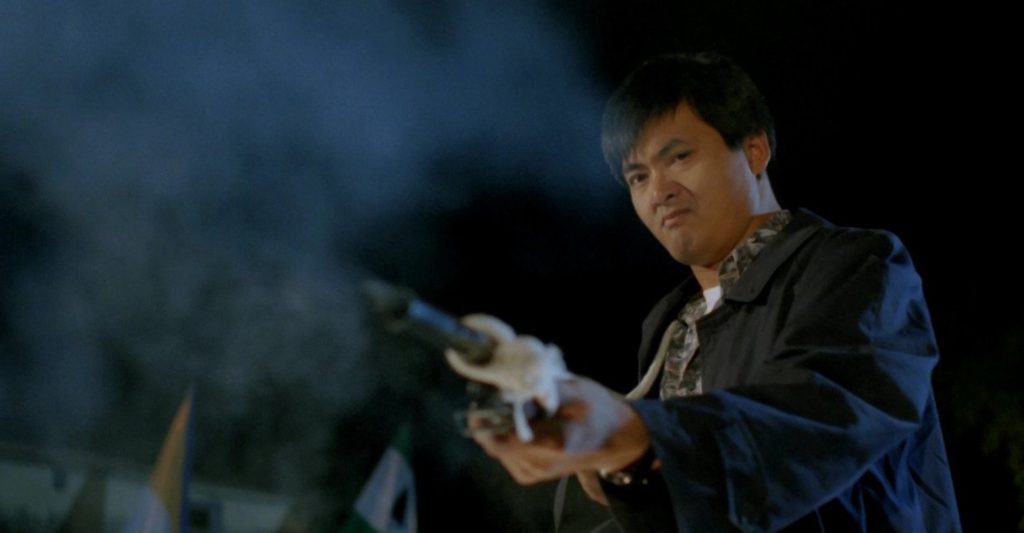
Tiger on the Beat (Liu-Chia Liang) – A seriously young-looking Chow Yun Fat is a seriously laid-back cop who finds himself teamed up with the same policeman who came seriously close to blowing him away mere days previously. ‘Serious’, in the superlative sense, probably sums up this movie better than most words, most notably in the final fight sequence which has a chainsaw battle that beats anything I’ve seen anywhere. Chow Yun Fat does other nifty work with weapons unlikely to pass the BBFC as he takes on…(all together now)…a gang of drug smugglers! While there might not be much new here, the execution is almost flawless making it one of CYF’s best. And that’s seriously good. 9/10.
Animation
Ariel. Ariel stands for All-Round Intercept and Escort Lady: pride of the Earth’s defence force, a four hundred foot tall “pink fairy” (to quote the trailer), though “female robot” might be more accurate. Controlled by three school-girls, the episode of this I saw had them fighting to save the Earth from a guy who wanted to destroy it, seemingly because he’d been spurned in love. Sounds fair enough to me. As ever, Tokyo gets trampled by the monsters he controls – until the pink fairy arrives… 5/10.
Dream Hunter Rem. It’s well known that anime heroines all have eyes like saucers, but Rem truly takes the proverbial ginger snap – she could use dustbin lids for shades. The cuteness is enhanced by a mini-skirt that won’t stay dead, but is at odds both with her car (a rocket launcher equipped Metro City) and her large sword (with a capital F). Like a modern day Captain Kronos, she faces all manner of occult nasties – the episode I saw had a headless samurai who eventually finds his skull and immediately grows to such a size that Ariel (cf.) would have problems. Despite the sword, the problem is not solved by chopping it into small chunks, which is a nice change. 8/10.
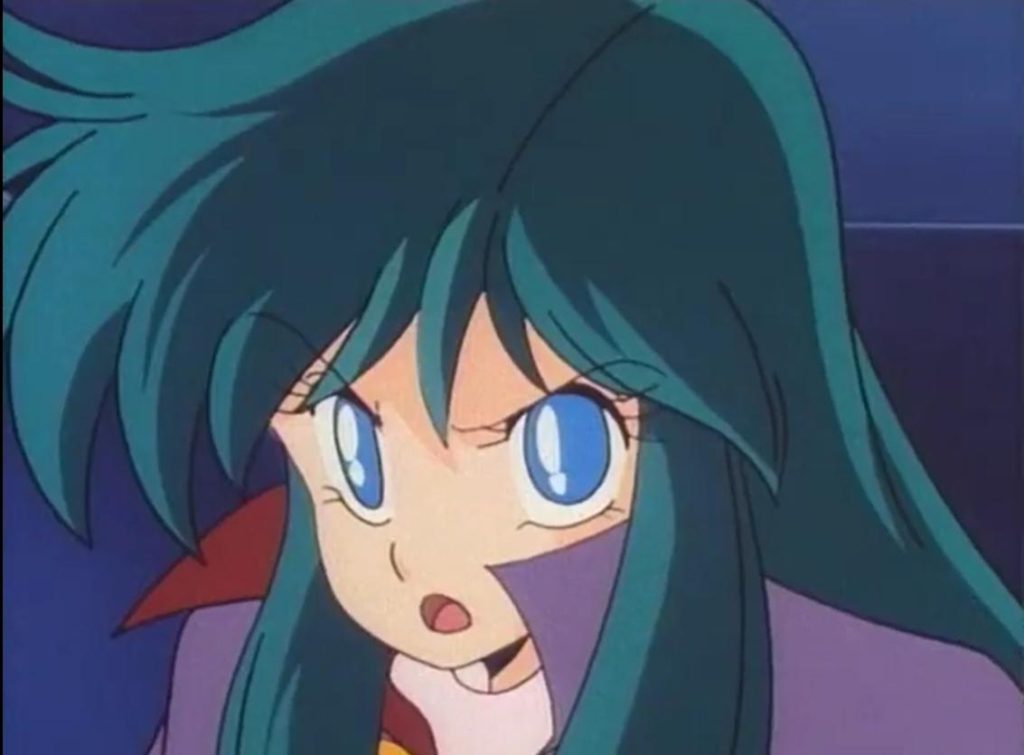
Guy. Certain themes recur repeatedly in Japanese animation. ‘The Thing’ would seem to inspire a number of films where people turn into the sort of creatures H.P.Lovecraft described as “indescribable” (usually just before he spent several pages describing it). This is a good example: there’s something unpleasant in a mine that makes you go icky and start ripping heads off bodies. Spectacularly messy, with a helping of sex as well, including some rather nasty stuff with a gun barrel. 6/10.
My Neighbour Totoro – On the other hand, the gentler sort of anime: no space-ships, no monster robots tearing each other apart and absolutely no tentacles doing unpleasant things to anyone. Director Miyazaki has turned out some great stuff in the past (‘Laputa’ and ‘Warriors of the Wind’), and this is even better still. It’s like ‘The Railway Children’, perhaps with overtones of ‘Alice in Wonderland’, as a young girl (no sniggering please, this is strictly legit) moves into the countryside when her mother has to go into hospital, and meets the mystical inhabitants of the forest. None of whom have tentacles. About the only frightening thing is that I enjoyed it so much “despite” it being all gentle and nice. Complaints about TC going soft are acceptable only from people who’ve watched this and not gone gooey! 9/10.
Once Upon a Time – An ultra-rare item, anime released here without being entirely mutilated, this ranks as the most depressing animated movie I’ve seen. Beautifully done though, with characters who possess more depth than many live-action films, and a harsh condemnation of war that pulls surprisingly few punches for it’s ‘U’ certificate. Ignore the naff cover and the very naff trailers for other MY-TV cartoons, get to the main feature and you’ll be hooked. Worth far more than the 4.99 you’ll pay, if you can find it. 8/10.
Patlabor. Another favourite anime theme is the characters in mechanised body armour (a primitive version of which Ripley wore at the end of ‘Aliens’, or see ‘Robojox’ – if you must) fighting wars, each other, or as in this case, criminals. More than that I can’t really claim to have understood: there’s a lot of running around before we get to the interesting bit: a battle in which the villain appears to demolish most of the police force. ‘To be continued’ apparently, though it’s not a prospect I view with enormous enthusiasm. 3/10.
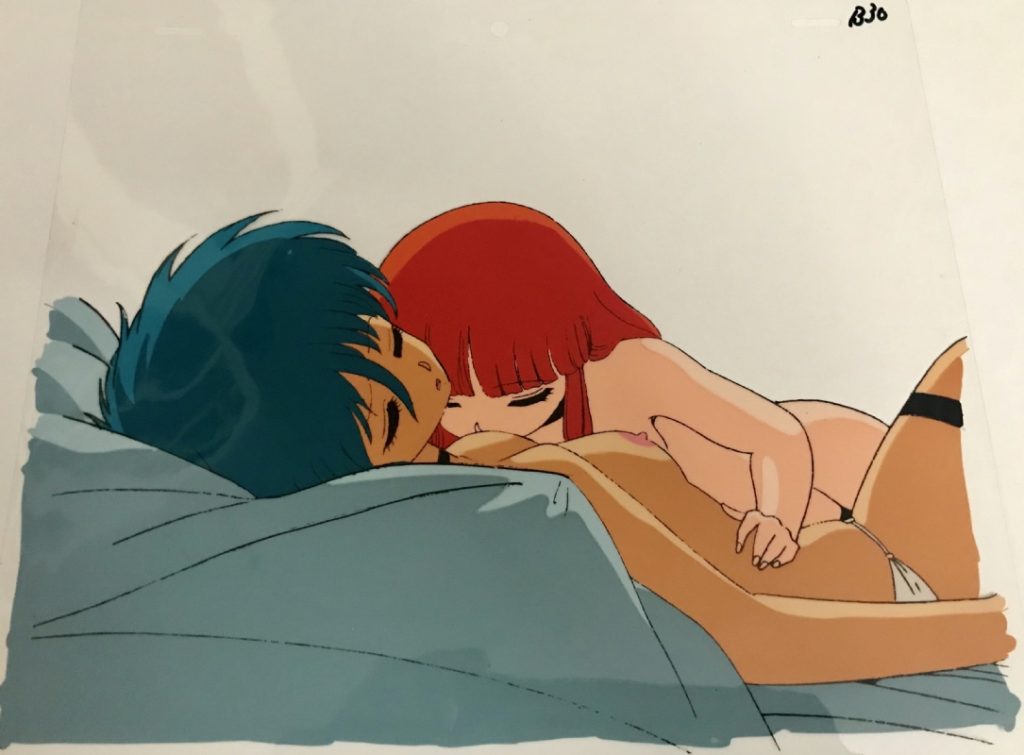
Pop Chaser. The setting here is part Western part sci-fi: the heroine rides into town in her battle armour and finds the place strangely deserted. In the local saloon she finds this is due to a gang of outlaws led by Zack – that night, Mai, one of the saloon girls, asks for her help and they indulge in some tasteful lesbian love. The next day, Zack kidnaps Mai, only to find her a bit too much of a lap-ful and after lots of explosions his gang are defeated. A pleasant mix of soft-core sex and violence. 8/10.
Robot Carnival. A compilation film of eight parts, done by different animators, loosely linked by the theme of ‘Robots’. As with all such things, the results are variable but there is only one dull segment, a terribly New Age sequence with lots of clouds. The rest are mostly good to very good and there’s one incredible piece about an inventor who builds a female robot only to find her falling in love with him, which has to be one of the most moving pieces of animation I’ve seen. If any anime deserves a wider release, it’s this one. 3-10/10.
Vampire Hunter D. The title is about as far as my understanding goes: the hero, who may well be a vampire himself, travels about an alien world (complete with dinosaurs) taking on various nasty critters, helped by a female he rescues on the way. Nice opening sequence of a dinosaur hunt that goes wrong and thanks to the striking visuals, this is an example of a film that’s always interesting even if you don’t know what the hell’s going on! 7/10.
Wings of Oneamise. Unusually deep anime, more ‘The Right Stuff’ than ‘Top Gun’. Set on another planet, where one nation is on the verge of getting into space. I was expecting the usual techno-overkill (not that I dislike techno-overkill, I hasten to add!) so it was a pleasant surprise to see that it remained low-science and concentrated on the characters involved who, for example, worry about the worth of the project when the money could be used for “better” things. Intelligent and engrossing. 8/10.
